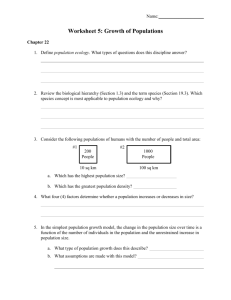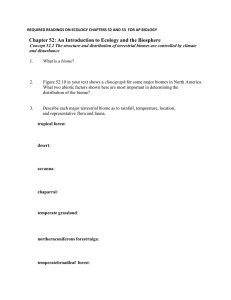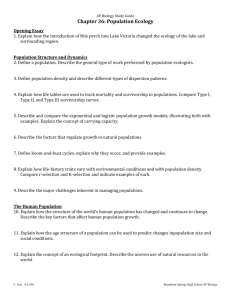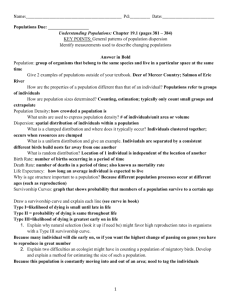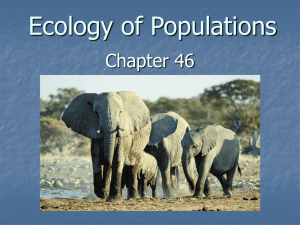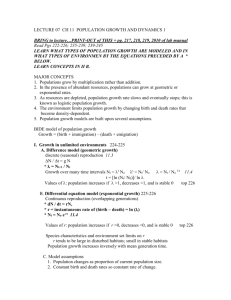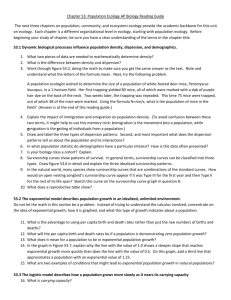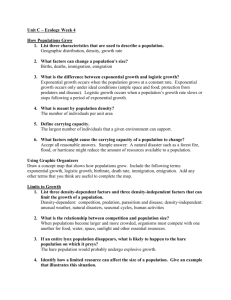Ecology 2 Population Dynamics PDQ
advertisement
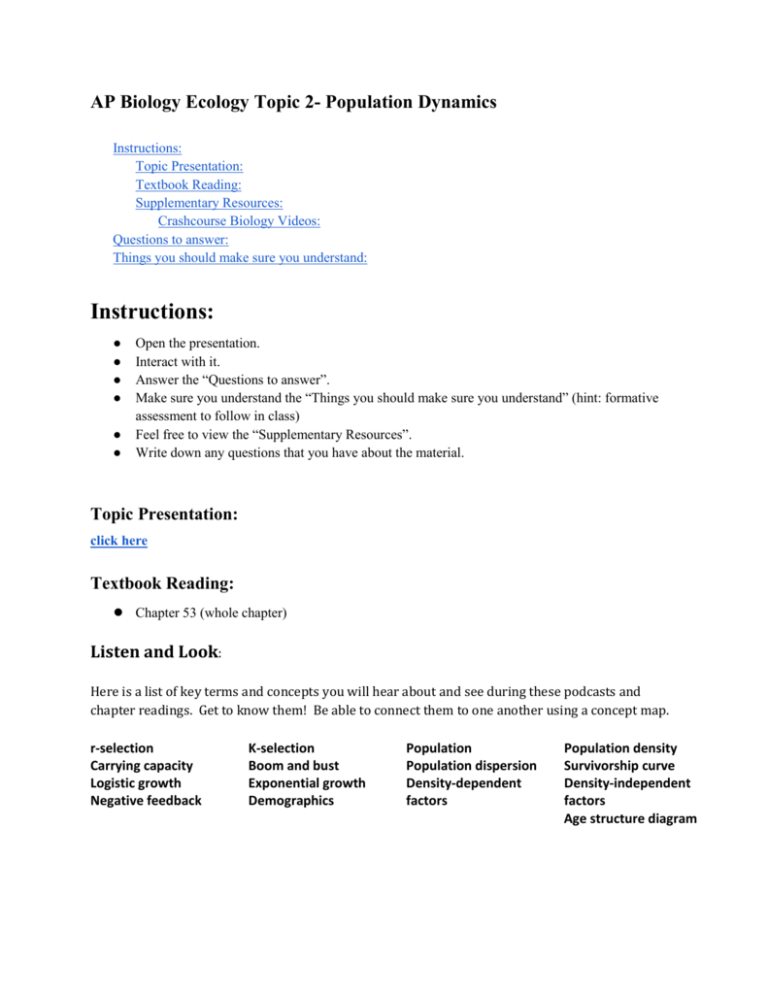
AP Biology Ecology Topic 2- Population Dynamics Instructions: Topic Presentation: Textbook Reading: Supplementary Resources: Crashcourse Biology Videos: Questions to answer: Things you should make sure you understand: Instructions: ● ● ● ● ● ● Open the presentation. Interact with it. Answer the “Questions to answer”. Make sure you understand the “Things you should make sure you understand” (hint: formative assessment to follow in class) Feel free to view the “Supplementary Resources”. Write down any questions that you have about the material. Topic Presentation: click here Textbook Reading: ● Chapter 53 (whole chapter) Listen and Look: Here is a list of key terms and concepts you will hear about and see during these podcasts and chapter readings. Get to know them! Be able to connect them to one another using a concept map. r-selection Carrying capacity Logistic growth Negative feedback K-selection Boom and bust Exponential growth Demographics Population Population dispersion Density-dependent factors Population density Survivorship curve Density-independent factors Age structure diagram Supplementary Resources: Crashcourse Biology Videos: The History of Life on Earth - Crash Course Ecology #1 Population Ecology: The Texas Mosquito Mystery - Crash Course Ecology #2 Human Population Growth - Crash Course Ecology #3 10. Using a graphic organizer, describe the characteristics of populations that exhibit Type I, Type II, and Type III survivorship curves. 11. Choose an organism. Explain how the environment influences an organism’s life 1. Explain why there is less species diversity history strategy. at the Earth’s equator and poles than there is 12. Create a chart that compares and at latitudes above and below the equator. contrasts the biological, economic and social Describe the factors that contribute to the issues faced by the following populations: richness of biodiversity at the latitudes above Questions to answer in your ISN: and below the equator. 2. Explain the difference between population density and population dispersion. Describe how the three different patterns of population dispersion can act as adaptations for a population’s survival in an environment. 3. Explain how limiting factors in a population lead to natural selection. 4. Describe at least two conditions that might cause a population to undergo exponential growth. 5. Examine Figure 1. Predict where a line that represents a population growth with an exponential value of 1.5 would go. 6. Describe the limiting factors that prevent many populations from reaching their carrying capacities. 7. Using Figure 2, explain why a sigmoid (Sshaped) curve is generated by the logistic model of population growth. 8. Using Figure 3, explain the pattern of population growth represented in the graph. 9. Draw a series of illustrations that explains the difference between density-dependent and density-independent limiting factors. Explain which of the two have the greatest immediate impact on a population. a. Third world rapidly growing populations b. First world slowly growing populations c. First world rapidly aging populations Things you should make sure you understand (we will address most of these in class): (feel free to ask questions about them in class) ● How to use the exponential and logarithmic models of population growth. ● How to estimate population size using mark-recapture and quadrat sampling methods. ● Examples of organisms that demonstrate the modes of distribution, survivorship, and reproductive strategies discussed in this presentation. ● Examples of each of the density-dependent factors discussed in this presentation. ● How the historical growth of the human population has contributed to all anthropogenic ecological crises currently manifested in the functioning of the global ecological system. ● How the current dynamics of the human population may affect the continuing function of the global ecological, economic, and human-social systems.


